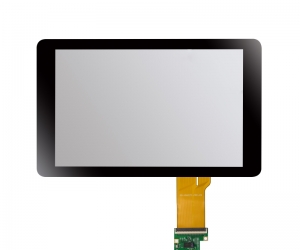News
News
The Difference Between Electromagnetic Touch Screen And Capacitive Touch Screen
Everyone knows that on a touch screen mobile phone, we usually use finger operation and can also use a pen to operate, but you will find that if you want to write on the mobile phone screen, you will find that the lines of the words are very thick strokes. The precision control is very poor. It is basically impossible to make a line on the screen or write a few words in the gap of an article. There are two kinds of touch screens commonly used in mobile phones, capacitive touch screens, and resistive touch screens.
At present, e-ink screen e-readers with handwriting functions use electromagnetic touch screens instead of the capacitive touch screens and resistive touch screens commonly used on mobile phones. In fact, this is determined by the characteristics of these three screens. Here we share with you the difference between the three touch methods.

1. Resistive Touch Screen
The price is very cheap, the precision can reach the precision of a single pixel, and it can be operated by fingers, fingernails, stylus, etc. However, it is soft and prone to scratches. Due to the use of an extra screen layer, it performs very poorly in sunlight and has low visibility.

2. Capacitive Touch Screen
Capacitive touch screens are costly. The principle is to use the current generated by the touch and screen contact to locate, so you can operate with your fingers, but non-biological, like nails and pens can't operate. In addition, the accuracy of the capacitive touch screen can theoretically reach several pixels, and the effective range is actually about 1 square centimeter. It can be seen that capacitive touch screens require handwriting recognition, which is basically impossible, let alone drawing lines and the like.
Between resistive touch screens and capacitive touch screens, more and more devices are choosing to use capacitive touch screens. For example, iPhone, most mobile phones using android system, are capacitive touch screens. Due to the principle of these two screens, they are not suitable for e-readers, and it is difficult to install them on the e-ink screen. Therefore, the hand-held e-ink screen is an electromagnetic touch screen.

3. Electromagnetic Touch Screen
The basic principle of the electromagnetic induction touch screen is determined by the magnetic field change during the operation of the electromagnetic pen and the sensor under the panel. The electromagnetic pen is the signal transmitting end (transceiver), the antenna board is the signal receiving end (receiver), and the magnetic flux when approaching the sensing change occurs, and the position is defined by an operation.
The electromagnetic touch screen market is almost entirely dominated by the Japanese manufacturer Wacom. Due to the high cost, the electromagnetic touchscreen has high transmittance, high resolution, and sensitivity. It has Z-axis sensing capability and is suitable for drawing and handwriting recognition. And so on, and without the need to touch the screen directly, you can take advantage of touch. The accuracy of the electromagnetic induction pen, handwriting recognition, etc. is very suitable for scribing, annotating, and memo in the text gap. This is the main reason why e-readers use it. Moreover, the electromagnetic touch screen module has a flexible special function and can be matched with a software display. The disadvantage is that it relies on the electromagnetic emission of the stylus to position, and the operation must use a pen. Therefore, the e-ink products currently using the e-ink screen are electromagnetic touch screen and cannot be operated by hand.
4. Future Development Direction
The industry is also aware of the problem of handwritten touch on e-ink screens and is conducting some related research on finger touch operations on e-ink screens. For example, can you use a resistive touch screen with an e-ink screen? In the future development direction, touch screen integration on the e-ink screen is a priority research direction.
How to distinguish these three screens? It's very simple, it can be operated with your fingers, but it is a capacitive touch screen that can't be operated by non-biological, such as nails, toothpicks, and pens. It can be operated with fingers, nails, toothpicks, branches, etc. It is a resistive touch screen. It can only be operated with an electromagnetic pen. It cannot be operated with hard objects such as fingers, toothpicks, branches, etc. It is an electromagnetic touch screen.
You may also like
 EN
EN







